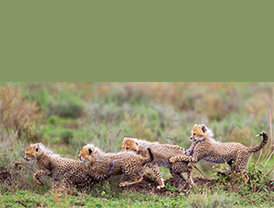
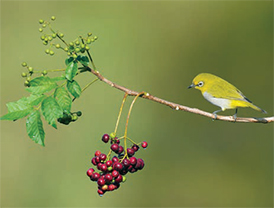
According to you, what are the behavioural traits of animals that a wildlife photographer should be aware of?
It is very important for every person to understand the behaviour of wild animals, especially for general tourists, who drive on roads that cut through forests and even the ones, who go on safaris. The foremost rule is that animals should not be disturbed. Keep a safe distance from all animals, especially elephants. Wild elephants often mock charge and as a nature lover and wildlife photographer, it is important to understand their behaviour.
A lot of people mistake a mock charge to be a serious charge or vice-versa. For instance, during a mock charge, an elephant’s trunk is coiled outward and ears are close to the head. If the trunk is coiled inwards and ears are very close to the head, this is considered to be a serious charge. Elephants with calves are very protective. Hence if you spot a calf, be alert and keep sufficient
distance.
Elephants have a keen sense of smell and acute hearing abilities. In situations, where you are being a The Ballet-Ndutu Plains, Tanzania, Africa chased by an elephant,you must try throwing away your cap or part of clothing. This can help in distracting the elephant before you make an escape. These are basic guidelines that elephant researchers and experts have documented. A wild animal’s behaviour is unpredictable, so please use these tips.
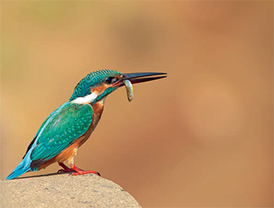
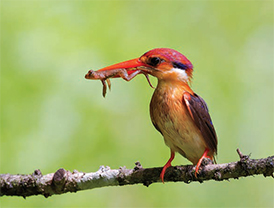
What is your opinion on photographing captive animals?
Honestly, I am not in favour of photographing captive animals. I strongly believe that when they are photographed in their natural habitat, their real behaviour is seen. Animals in captivity may or may not be healthy due to the environment.
What is your preparation ritual before you embark on a wildlife photo shoot?
Deciding what subject to photograph, identifying locations, finalising the right time and conditions, researching the place, understanding the equipment to carry and so on. One needs to make a standard check list of things to carry before going for a photo shoot.
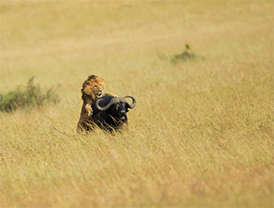
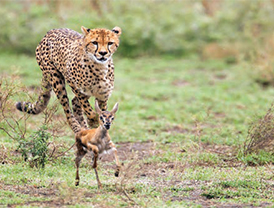
What tips can you give our readers on photographing wildlife?
Photography is an art; one needs to keep in mind the 3 P’s–Patience, Planning and Persistence–to be successful in photography. Wildlife Photography must be pursued with a goal and objective in mind apart from achieving all the success in this field. The most important one is to ensure that the image is a story teller. The photograph should help the world in understanding the concerns towards nature and environmental issues. It must convey the importance of wildlife conservation.
Wildlife Photography is exciting and interesting. However, it is also an under-paid job. As a hobby, it can be quite expensive and will need extensive travel. One needs to plan his or her budget well before he or she spends.
Indian photographers have come a long way and achieved success globally. The younger generation can follow and take it to the next level. It is also advisable to undergo formal training and be a certified Naturalist.
I am one of the founding members of the Indian Wildlife Conservation Trust (IWCT). I request all nature lovers and readers to do their own bit to support us and for details you can visit www. iwct.in
Which is your favourite wildlife photography location?
It is mainly the Tiger reserves that I love like the Bandipur Tiger Reserve, Rajiv Gandhi National Park, Nagarahole, BR Hills, Ranthambore Tiger Reserve, Jim Corbett , Tadoba Andhari Tiger Reserve, Bandhavgarh Tiger Reserve, Dandeli – Anshi Tiger Reserve etc. Apart from travelling in India, I have visited Africa and Pantanal in Brazil, South America. But if you ask me to pick up one, it has to be Bandipur. My journey as wildlife photographer began there and I have a lot of memorable moments in that forest. |SP

